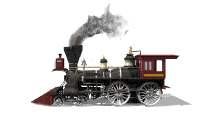|
Location of the Queen Charlotte Islands
First visited by Juan Perez in 1774 and Captain James Cook in 1778, the
Queen Charlotte Islands were surveyed by Captain George Dixon in 1787. The
islands are a collection of 150 mostly small islands located about 720 kilometers (450 miles) north of Vancouver, British
Columbia and 128 kilometers (80 miles) west of Prince Rupert, British Columbia. The islands are about 240 kilometers (150
miles) long from north to south and approximately 46 kilometers (40 miles) wide from east to west. The islands are grouped
into 3 distinct groups, the Queen Charlotte Ranges, the Skidegate
Plateau and the Queen Charlotte Lowlands. The main islands are
Graham and Moresby. The town of Masset, located on Graham Island is the main settlement. Of the approximately 5700 residents
of the Islands, 2000 are members of the Haida First Nations. The ancient village of Ninstints has
been designated a World Heritage Site by the United Nations.
Link to British Columbia.com
Link to map of Queen Charlotte Islands
Link to information and maps
Terrain Features
The Queen Charlotte Islands
are typical of a northern latitude area. The Islands attract many scientists and tourists because they escaped glaciation
making them a biologically unique area in Canada. The rocky and rugged combination of mountains, old forest, muskeg and
beautiful beaches are the focus of interest. The geographical area of the islands is over 1
million hectares. Reserves and parks account for approximately
22 per cent of the land while timber harvesting accounts for another 32 per cent of the land.
Link to Gwaii Haanas..com
Link to Haida Gwaii terrain website
Link to Hiking and Backpacking
Birds and Animals
Some of the animals unique to the area are a sub species of the North American black bear , the pine marten, dusky shrew, short tailed weasel and the Queen
Charlotte goshawk. The beaver, eagle, fox
and deer are also among the wildlife who make their home on the islands.
The location of the Islands make it a natural stop for the migratory birds, such as the wandering
tattlers, which travel from Alaska to Mexico. It is also a prime nesting area for bald
eagles, tufted puffins, auklets and
thousands of other sea birds. Inland, the lush old-growth forests provide nesting sites for sharp-shinned
hawks and other raptors. Peregrine falcons nest on cliffs near the shore.
Link to the National Geographic website
Plants and Trees
The Islands largely escaped the ravages of glaciation because of the steep cliffs and are home to huge stands of old
growth forests. Red and yellow cedar, giant sitka
spruce, and western hemlock are the towering giants providing
a canopy for the mosses, ferns and wild berries that are abundant on the forest floor. Unfortunately, clear cut logging has
destroyed almost half of the forests on these islands which leaves them prone to landslides and erosion. The clearing of the
forests also provided an attractive area for the black tailed deer which eats the native forest species before they can regenerate.
Beavers, who have been introduced to the area, are also causing some problems with their natural tendency to build dams along
small streams. This makes it difficult for the coho salmon to travel upstream
to spawn. Other introduced species such as squirrels and raccoons have reduced the size of seabird colonies by eating the
eggs and young birds.
The World Wildlife Foundation is the source for some of the information contained
on this webpage. I would encourage you to visit their website or that of The National Geographic
Society to learn more.
| Planning a visit to the Islands? |

|
Trips to the Haida Gwaii (Queen Charlotte
Islands)
The Queen Charlotte Islands are known as
the "Canadian Galapagos" because of the rugged beauty of the terrain, abundance
of wildlife, and untainted historical setting. Whale watching in the sea around the islands, fishing, hiking and camping
on the rugged landscape, exploring Haida history and visiting local artisans are popular tourist activities.
Via Rail Train Website.
Link to Maple Leaf Adventures.
Link to the Copper Sky Schooner Adventures
Link to the Bluewater Adventures Coastal Cruises
|

